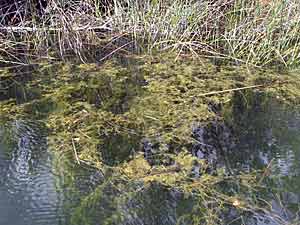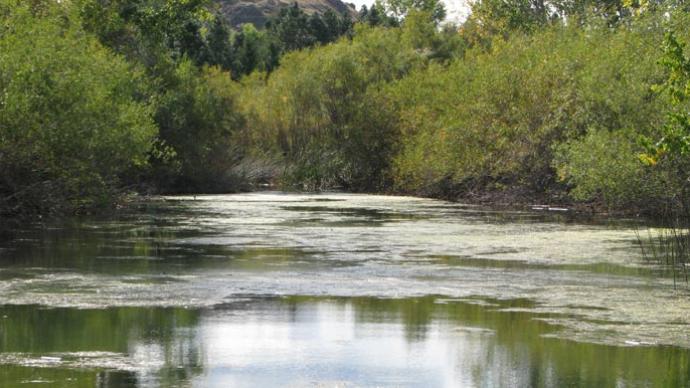
This time of year phone calls to Pond Boss World Headquarters are biased toward aquatic plant problems. It's summer, the time for runaway vegetation to capture the attention of pond owners. Even well managed ponds can be victimized by several species of invasive plants.
Invariably, three things happen when someone calls asking what to do about excessive plants in their pond. First, they rarely know the plant. Well intentioned folks are looking for answers to a question they don't know how to ask. "I have hydrilla, and it's taken over my lake." That's a common one. Or, "I have too much duckweed." Seems those two have become colloquial names from a concerned, but unknowing, public. Secondly, pond owners don't know how big their ponds are. You have to know pond size to determine how much of what to use, whether you choose herbicides, organic or inorganic, or grass carp. Last, but certainly not least, people don't have a good understanding how plant life in a pond actually works.
We received a package from a reader late May. Inside, was a sample of creeping water primrose with a species of filamentous algae, along with a note. The note said, "Our pond is in terrible shape. It is loaded with this slimy green stuff with the viney looking stem thing." It went on, "Please, if you can come and look and help us take care of this problem, plus the water looks mucky. Our pond is five acres."
I headed their direction, drove in the gate, and saw a healthy, vibrant pond with small amounts of filamentous algae in the shallows, with five small areas of yellow water primrose dotting the shores of this three acre pond. The water had a perfectly balanced plankton bloom, an olive green hue with visibility at 27 inches. Perfect. We sat on the dock and had a short seminar on the lifestyles of ponds.
The husband, in the beginning of our discussion, didn't like algae clinging to his spinnerbait hook. The wife, in the beginning, wanted clear water.
After a few minutes of steep learning curves, both better understood what they had. We simply had to define "normal" and "bad" in ways both could understand. Then, explaining the oxymoron of clear water and zero plants left them relieved and satisfied.
They now see their pond in a healthier light.
Then, there's the other kind.
We received a phone call June 1. It went something like this, "Hello, we were referred to you by a friend of ours who said you could help us with our forty acre lake. It is more than half covered with Eurasian watermilfoil, and we want to treat it."
A quick trip and evaluation proved the phone call was grossly understated.
The 45 acre lake was 95% covered with milfoil. It was completely unusable, unfishable, and an eyesore. Come to find out, the owner of the lake had leased it to these unsuspecting people last winter, when plants were dormant. The lessees had leased his ranch for hunting, and wanted the lake for fishing. It was what the landowner didn't tell them which hurt...the lake had been choked every summer for the last 10 years. Now, the lessees wanted the lake fixed or their money back.
They scratched their heads over a cup of coffee. The landowner didn't want to part with the money, the lessees didn't want to part with the lake. So, the renters signed a long term lease, the landlord agreed to split the cost of treatment with them, and they shook hands.
That's when they called us.
Next, the lake was mapped, areas of vegetation plotted, and a thoughtful protocol was established to treat the lake. The lake was divided into six equal pieces, and milfoil was eradicated in two separate spots three times, over three weeks.
When vegetation is under control, the group intends to monitor and improve the fishery. That's a whole nuther story.
Aquatic plants do what aquatic plants do. Some are native, healthy plants that wouldn't invade a thing. Others are seasonal, growing fast, then disappearing as fast. Others come in and take over, like underwater kudzu.
So, dear pondmeisters, be aware of your plants. Take time to identify plants, especially new ones, each spring, as they begin to grow. If you know which ones you have, you can predict what they will do as summer temperatures rise. It's a lot better to look into the future of a plant in the spring and make a decision than to stare reality in the face and fix it in July.
Reprinted with permission from Pond Boss Magazine



